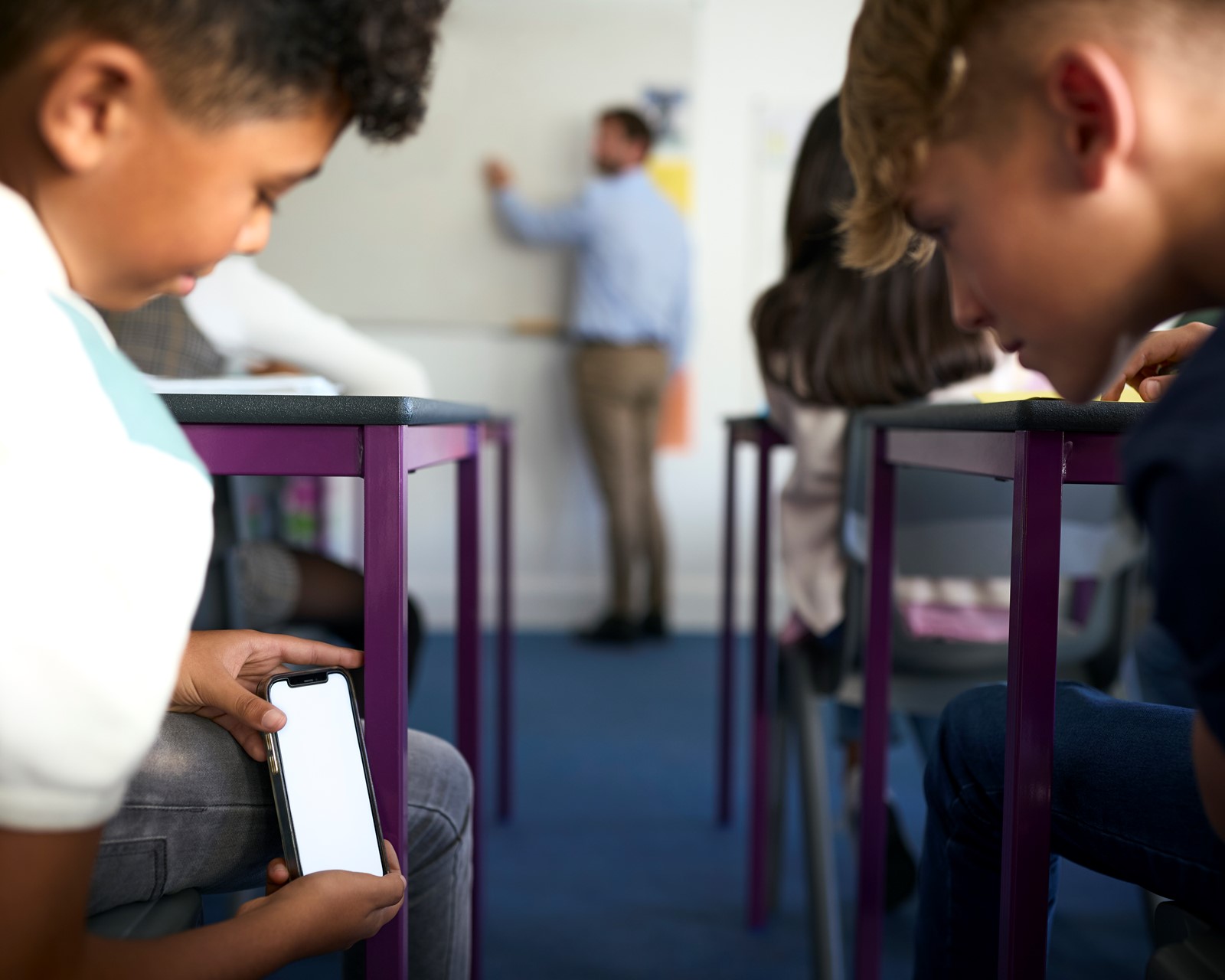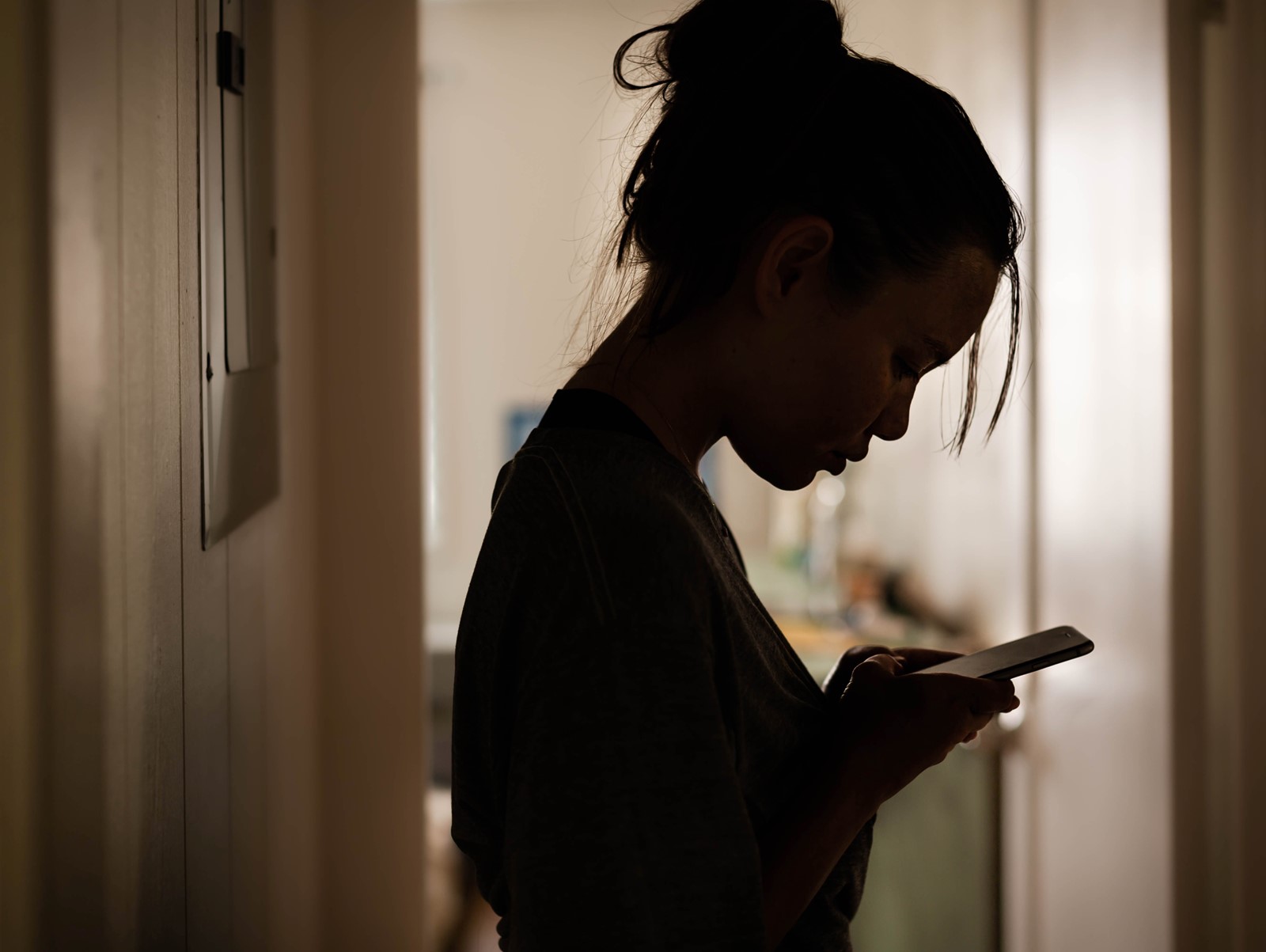

Think back to your own school days. How much learning, friendship, and fun would have been lost if you had been allowed to bring a small television set to school and watch it all day long, even at lunch and recess? It may seem like an absurd question — a television set? at school? — but it is precisely the reality that students today are experiencing.
Since the early 2010s, U.S. middle and high schools have seen a startling increase in mental illness and psychological suffering among their students. The acceptance of smartphones in schools has fueled cyberbullying, conflict among students, and had a cumulative, enduring, and deleterious effect on adolescents’ abilities to focus and apply themselves. This is especially harrowing as nearly half of American teens say that they are online “almost constantly”.
This isn’t just about mental health and school safety. Globally, test scores have been dropping since 2012. Earlier this year, new data from the National Assessment of Educational Progress showed that reading and math scores in the U.S. have dropped to their lowest levels in decades.
Now Colorado school leaders have a chance to do something that can truly help kids.
This spring, Gov. Jared Polis signed House Bill 1135 into law, requiring schools to develop and implement a policy on student phone use during the school day. It’s a step forward — and it couldn’t come at a more urgent time. School leaders are beginning to shape those policies now, with an implementation deadline less than a year away.
Colorado, like many jurisdictions in the U.S., is leaving the specifics to local districts. This means that policies could range from “put phones in your backpacks during instruction time” to “bell-to-bell phone-free campuses.” While HB 1135 is certainly a step in the right direction, I urge Colorado school districts to go beyond partial limits and adopt bell-to-bell phone-free school policies like Boulder Valley School District has already done. Limiting phone use only during instructional time still allows for students to rush to their phones between classes, at lunch, and during recess, costing them valuable opportunities to connect with one another face-to-face.
Moreover, research from the National Education Association found that 73% of teachers in schools that allow phone use BETWEEN classes report that phones are disruptive DURING class. In contrast, of the several policies examined, only the phone-free or “away for the day” policy produced good results: only 28% of teachers in such schools said that phones were disruptive during their classes. It’s only when students have 6-7 hours away from their phones that they fully turn to each other and to their teachers. Otherwise, teachers will continue to be responsible for enforcing phone policies when students come back from breaks, which is a role they are eager to relinquish.In a divided country and a world of diverse nations, we have seen education policy on this subject move at astonishing speeds elsewhere. Why? Because parents and teachers around the world have seen the damage done to students’ attention, education, safety, and mental health when they spend much of the school day on their phones texting, scrolling and posting on social media, watching videos, and playing video games.
A 2024 survey of school principals showed that they were similarly alarmed by the effect of smartphones on students, with 88% stating that they were making children tired and distracted, and 85% believing it was amplifying violence and bullying in schools. No wonder that, in 2023, a major Unesco report considered the overwhelming evidence that excessive phone use was correlated with lower school performance and poorer mental health and called for the ban of smartphones from schools.
Walk around most school hallways today and take in the silence, notice the eeriness. In contrast, whenever schools adopt a bell-to-bell policy the reports from teachers and administrators are always the same: “we hear laughter in the hallways again.” Also, bullying, disciplinary problems, and absenteeism decline. School becomes more fun.
Colorado has more than 880,000 public school students. Imagine the impact if, over the next year, districts committed to bringing conversation and laughter back to their schools’ hallways.
Social media is designed to steal the attention of kids and teens who are at pivotal stages of their mental development. Our kids are owed their attention back. Our kids deserve the learning, friendship, and fun that we recall from our own schooling experiences. And, for now, the one place where we can truly safeguard that is schools. We need to give our kids a break from the noise and the drama. We need to and Colorado can.
Jonathan Haidt is a social psychologist and the author of The Anxious Generation.


 PREVIOUS ARTICLE
PREVIOUS ARTICLE
